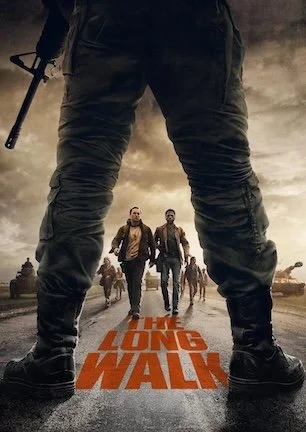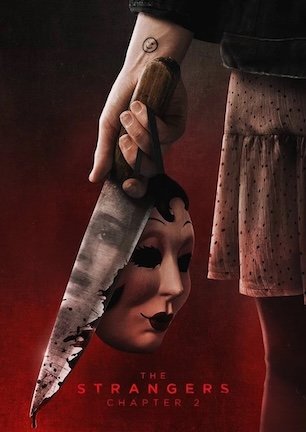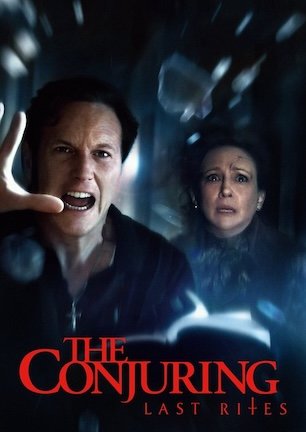Studio: Netflix
Director: Leigh Janiak
Writer: Phil Graziadei, Leigh Janiak, Kate Trefry
Producer: Peter Chernin, Jenno Topping, David Ready, Kori Adelson
Stars: Kiana Madeira, Ashley Zukerman, Gillian Jacobs, Olivia Scott Welch, Benjamin Flores Jr., Darrell Britt-Gibson, Sadie Sink, Emily Rudd, McCabe Slye
Review Score:
Summary:
The Shadyside curse comes full circle as Deena learns the truth about what happened to the witch Sarah Fier in 1666.
Review:
A small part of me probably would have preferred to review all three “Fear Street” movies in one fell swoop instead of one at a time after each week they released. Suspicions turned out to be justified that some criticisms would have their validity nerfed after every piece finally fell into place. (What do you know? Mall janitor Martin sort of mattered after all!) Although the “Fear Street” films more or less fill a secondary function as standalone chillers, they were really designed to be one big story from the outset, much more so than say “Star Wars” or “Back to the Future” ever were.
That’s the trick with a multifaceted project. By nature of “Fear Street” being an event, people are likely to see individual entries differently once they’re revisited as an interlinked trilogy. I don’t think anything I previously said about “Fear Street: 1994” (review here) or “Fear Street: 1978” (review here) would change enough to warrant rewriting anything. On the contrary, I think the full circle supports my assertion that “1978” is the most disposable of the three. But I do believe I have a more favorable opinion of the entire “Fear Street” series, what it intended, and what it accomplished, now that I know how the three chapters fit together.
With centerpiece hero Deena transported into the body of accused witch Sarah Fier, “Fear Street Part Three: 1666” starts with a tour of the original Shadyside/Sunnyvale settlement so we can see which “1994” and “1978” actors are now playing which “1666” villagers. It’s a negligible novelty. Even though the film flashes back to the faces of who these folks were in the previous installments, some of them still draw reactions of “who is this again?” Some of them also aren’t onscreen for more than a minute. Cursory characterizations initially seem like something that will come back to bite “1666” except, like other minor matters that feel bothersome in the moment, you retroactively don’t stay hung up on these storytelling shortcuts once you get to the frightful fun that becomes infinitely more important down the line. On both micro and macro levels, “Fear Street” makes acceptable sacrifices during setup stages so the payoffs have more time to pack their punches.
As an (awkwardly) accent-heavy period piece that could be considered a far distant cousin to “The Witch” (review here) or “The Wind” (review here), “Fear Street Part 3: 1666” distinguishes itself from the slasher stylings of its two siblings with slower smoldering moodiness. At first, sleepiness started attaching weights to my eyelids. After the comparatively electric intensity of “1994” and “1978,” I felt a little let down by the less colorful setting and pilgrim-era pacing of “1666.”
As the atmosphere takes over however, the film takes on a macabre tone that’s devilishly dark without being oppressively dour. “Fear Street: 1666” doesn’t skimp on swaths of satanic ghoulishness, getting satisfyingly sinister with insidious grimoires, bloody animal sacrifices, and enough references about having sex with the devil to make an orthodox priest’s head spin 360 degrees. These movies are rated R, but they still don’t treat their target teen demographic with kid gloves when it comes to the themes, and they aren’t afraid to assault the audience with no-holds-barred horror either.
Where “Fear Street: 1666” really respects its viewers though, is in how it uses a typical tale of witch hunt hysteria to tell a story about finding courage, putting others above yourself, and fighting for acceptance when confronted with mob-minded bigotry. Modern parallels are quite clear with regard to how “1666” cleverly illustrates the dangers of prejudice and gossip by folding them into an urban legend’s bizarre evolution. Someone(s) out there struggling with their sexuality may be motivated by the smart way in which the movie couches empowering commentary inside Friday night fright flick entertainment. I defer to more clued-in writers who aren’t heterosexual, middle-aged men like me to elaborate, but don’t be surprised to see deeper dissections of “Fear Street’s” subtext and context sooner rather than later in the film criticism world.
Even if this half of “Fear Street: 1666” doesn’t appeal to you as a social snapshot or strictly as a midnight movie, the film flips its script at the midpoint, almost literally, for a swerve I don’t think is a spoiler, but I won’t spell it out anyway just to be safe. Just when you think you’re stuck in the beige dust of pre-colonial dreariness, “1666” snaps out of its time travel trance to trade up to a stage that goes hog-wild on gore. The finale finds a way to work in totally unnecessary meat for the grinder. Yet as mentioned with the fire-and-forget character introductions, you eagerly forgive “where’d this come from?” and “where’d that go?” concerns to simply give in to the smiling spirit of cinematic slaughter. There’s even a montage of every brutal death from the entire trilogy to serve as one final reminder of what “Fear Street” is truly all about.
And what it’s all about is accessible horror that’s ideal for the slumber party set, yet still carries nostalgically creepy appeal for older fans too. Like the books they’re based on, the legacy of these “Fear Street” films lies in the impression they leave on teen and pre-teen viewers more than anyone else. From the unempirical data I’ve sampled, “Fear Street” appears to be a winner on that front. Among every other ambition Leigh Janiak and her creative collaborators execute on effectively, I admire the “American Horror Story” approach of having one cast portray multiple people, even if a few of them have to be shoved in with a shoehorn. If a project of this scope and caliber can pass the terror torch to a new generation, why wouldn’t anyone want to see more residents populating future homes on Fear Street?
By the way, personal rankings appear to be all over the place, with no common consensus emerging anywhere on which entry is best or worst. I’d rate them 1994, 1666, then 1978. They all play better as a group of course, but “Fear Street: 1978” still sticks out as the sore thumb because it could have been set in any other era of Shadyside’s cursed history and the two bookending chapters would have turned out the same.
Review Score: 65






It assumes everyone watching must be a dimwit too dense to understand how the most basic storytelling concepts work.